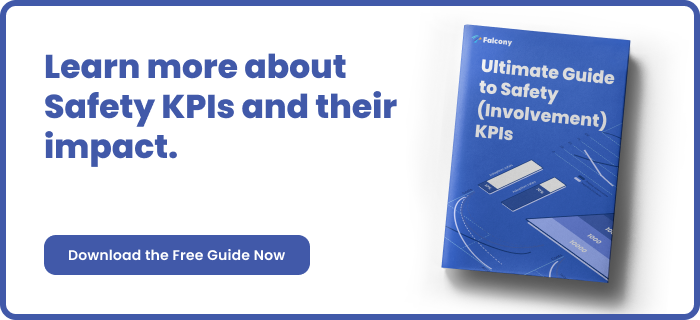How to Conduct Supplier Audit?
Supplier audits play a crucial role in ensuring that your supply chain remains reliable, compliant, and aligned with your business values.
Whether you are seeking to manage risks, improve quality, or meet regulatory obligations, conducting a thorough supplier audit can help foster transparency and trust between your organisation and its suppliers.
In this article, we explore the key steps to conducting a successful supplier audit, ensuring you gain valuable insights and drive continuous improvement.
Why Conduct Supplier Audit?
A supplier audit is more than a compliance exercise; it is a proactive approach to safeguarding your organisation’s operations and reputation. The main reasons for conducting supplier audits include:
-
Quality assurance: Ensuring products and services meet your standards.
-
Compliance: Verifying adherence to legal, regulatory, and contractual obligations.
-
Risk management: Identifying potential operational, environmental, and ethical risks.
-
Continuous improvement: Encouraging suppliers to enhance their processes and performance.
-
Sustainability and ESG: Assessing environmental, social, and governance practices.
Preparing for the Audit
Define Objectives and Scope
Start by clearly defining what you aim to achieve. Are you focusing on quality management systems, health and safety compliance, ethical sourcing, or environmental impact? Determine which processes, locations, and timeframes the audit will cover.
Select the Right Audit Team
Choose auditors who have the appropriate technical knowledge, auditing experience, and impartiality. Depending on the complexity of the audit, you may require a multidisciplinary team with expertise in areas such as quality management, health and safety, environmental compliance, or social responsibility.
Communicate with the Supplier
Notify the supplier well in advance. Share the purpose, scope, and logistics of the audit. This approach builds trust and ensures the supplier can prepare necessary documentation and personnel.
Develop an Audit Plan
Create a detailed audit plan outlining:
-
Audit schedule and agenda
-
Specific standards or criteria to be assessed
-
Key stakeholders to be interviewed
-
Documents and records to be reviewed
-
Facilities or processes to be observed
Conducting the Audit
Opening Meeting
Begin with an opening meeting to clarify the audit process, reaffirm the scope, and introduce the audit team. This sets a professional tone and ensures alignment with the supplier's management team.
Gather Evidence
Audit activities typically include:
-
Documentation review: Policies, procedures, certifications, training records, and performance data.
-
Interviews: Conversations with employees and management to understand processes and culture.
-
On-site observations: Inspecting production lines, storage areas, and workplace conditions.
-
Sampling: Checking a sample of transactions, products, or processes to assess compliance.
Record Findings
Document all observations, both positive and non-conformances. Classify findings by their severity (e.g., major, minor, or opportunities for improvement) and link them to relevant standards.
Reporting and Follow-up
Closing Meeting
At the end of the audit, hold a closing meeting to share your preliminary findings. Be constructive and transparent, allowing the supplier to clarify any misunderstandings.
Prepare the Audit Report
Draft a clear and concise audit report that includes:
-
Audit objectives and scope
-
Summary of findings
-
Detailed observations and non-conformances
-
Recommendations for corrective actions
-
Agreed timelines for improvements
Monitor Corrective Actions
Effective audits do not end with the report. Follow up on corrective actions to ensure they have been implemented and verified. This may involve re-audits or ongoing monitoring through performance data and supplier self-assessments.
Best Practices for Successful Supplier Audits
-
Maintain a collaborative approach to build lasting supplier relationships.
-
Use digital audit tools to streamline data collection and reporting.
-
Integrate ESG and sustainability criteria alongside traditional quality and compliance checks.
-
Treat audits as part of your broader supplier management and continuous improvement strategy.
Conclusion
Conducting supplier audits is essential to ensuring your supply chain is robust, ethical, and compliant. By following a structured approach, fostering open communication, and driving continuous improvement, your organisation can build more resilient and sustainable supplier relationships.
Modern web applications have a lot of benefits when it comes to organising audits, inspections, assessments and checks in a clear and easy-to-understand way. Test our Falcony | Audit FREE for 30 days or Contact us for more information:
We are building the world's first operational involvement platform. Our mission is to make the process of finding, sharing, fixing and learning from issues and observations as easy as thinking about them and as rewarding as being remembered for them.
By doing this, we are making work more meaningful for all parties involved.
More information at falcony.io.

Related posts
What is Supplier Audit?
In today’s globalised marketplace, businesses are becoming increasingly reliant on their suppliers...
What is the Purpose of Supplier Audit?
Supplier audits are a critical component of effective supply chain management.
They are essential...
Key Metrics to Evaluate Supplier Performance During Audits
In today’s globalised and highly competitive marketplace, maintaining robust supplier relationships...






